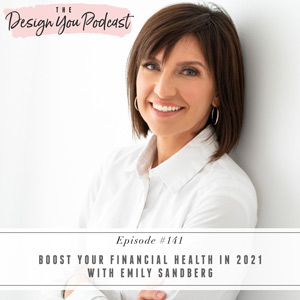
Many of us avoid looking at our business finances and wait until this time of year to even start to consider them. But if you wait until the end of the year, you’re giving up the opportunity to create the money or business you dream about for the rest of the year! Today’s guest joins me to share tips and advice to help us manage our finances more effectively, and create a financially healthy business in 2021 and beyond.
Emily Sandberg is a Certified Life Coach and also my CFO. She combines life coaching with her financial and business expertise to help clients understand their money, plan for growth and profit, and do the personal work around money that we all need. She believes that looking at the finances in your business can really turn your business around, and empower you as a business owner.
Join us on the podcast this week as we discuss all things finance. Learn the importance of budgeting, spending, managing money, and planning, and why a business that doesn’t financially support itself is not a business that’s enjoyable to run long term. We’re showing you how to make managing your finances part of your business that helps you grow, not hold you back. Get out your notepad, friends, we have a great episode for you today!
If you are Black, Brown, Indigenous, or a Person of Color, we’ve launched a new scholarship for a year-long membership of Design You! Click here for more details, but be quick! Applications close at 11:59 pm Pacific Time on December 11th, 2020!
If you want help in creating financial freedom and building a business that’s fun and thriving, get on over to the Design You Coaching Program! We only enroll a few times a year, so be sure to sign up for the waiting list ASAP to be notified when we next open our doors!





